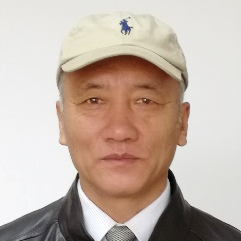
Qingbo Meng
Professor
Qingbo Meng is currently a full professor at Institute of Physics (IOP), Chinese Academy of Sciences (CAS), and is the director of Center for Clean Energy, IOP. He is now also the director member of Chinese Renewable Energy Society and the member of Editorial Board for Electrochem. Commun. He received his PhD degree in 1997 from Changchun Institute of Applied Chemistry, CAS. From 1997 to 1999, he was a postdoctoral fellow in IOP. From 1999 to 2002, he was a STA Fellow (Science and Technology Agency of Japan) and Researcher of the University of Tokyo and KAST in Japan. He was selected as “Distinguished Young Scholars” from NSFC in 2007 and the leader of the Creative Research Group Fund of China in 2014. He was awarded to “the Special Allowance of the State Council” in 2010 and “The president Award of the Tokyo University Science” in 2011. His current research interest focuses on solar energy-electricity conversion and solar energy-chemical energy conversion material and technologies.
Title: The Pathway to >15% Efficiency Emerging Kesterite Solar Cells
Abstract: The ongoing exploration of diversified compound photovoltaic materials is creating more opportunities for the efficient, low-cost, and environmentally-friendly utilization of solar energy. The emerging multinary chalcogenide, Cu2ZnSn(S, Se)4 (CZTSSe), is therefore being developed as a promising candidate to promote the large-scale and low-cost application of thin-film photovoltaics, by leveraging its advantages of high element abundance, nontoxicity, excellent material stability, and outstanding industrial compatibility. CZTSSe solar cell has experienced a rapid development in the first decade after it was developed. However, this cell has encountered a bottleneck in its efficiency in the past ten years with a stagnant efficiency at 12%~13% and thus still has a long way to go to be comparable to the commercialized counterparts, such as CIGS and CdTe. To find a way to overcome this impasse, we have conducted systematical investigations into the charge dynamics in CZTSSe solar cells and found that the charge loss in this device mainly lies in the bulk nonradiative recombination arising from the deep electronic defects and microstructural distortions. This finding has guided us to introduce a series of regulations on metal-molecular coordination in environment-friendly aqueous solution system, film growth mode, and crystal growth kinetics of CZTSSe to improve the film microstructure and phase evolutions. These efforts have finally helped us to realized efficiencies of >15% in Kesterite solar cells in this year. This advancement represents a significant breakthrough in the efficiency of CZTSSe solar cells, and also signifies that this type of cell and its key technologies will enter into a new stage. Simultaneously, this breakthrough brings new opportunities for the development of novel inorganic thin-film solar cell systems, with CZTSSe as a representative.

 京公网安备 11010802039275号
京公网安备 11010802039275号